Configuration of Additional Object Classes for CalDAV
It is possible to use other Fabasoft Folio object classes together with the Fabasoft Integration for CalDAV.
Restriction for allowed object classes
Every Fabasoft Folio object class that is to be allowed as a calendar, event or task has to be explicitly allowed in the respective attributes:
- Fabasoft Folio object classes for use as a calendar: FSCCALDAV@1.1001:calendars
- Fabasoft Folio object classes for use as a task: FSCCALDAV@1.1001:todos
- Fabasoft Folio object classes for use as an event: FSCCALDAV@1.1001:events
The configuration is explained here with the attribute FSCCALDAV@1.1001:events, where the Fabasoft Folio object classes Worklist and Activity Instance are allowed, but may not be created in the list of events of a calendar.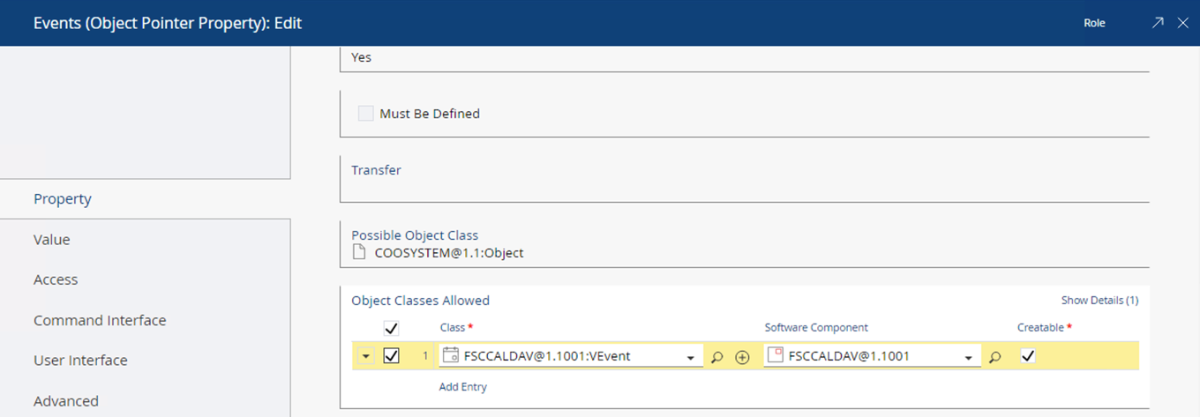
Note: Your Software Component has to allow the required Fabasoft Folio object classes. Also, whether a new object of this class can be created or not.
Configuration for CalDAV
The configuration is explained here by means of the Fabasoft Folio object classes Worklist and Activity Instance.
- Create a new CalDAV Configuration in an Administration Tool.

In the aggregate Configuration for Calendars Fabasoft Folio object classes are configured which can be used as calendars (e.g. Worklist).
In the aggregate Configuration for Calendar Entries Fabasoft Folio object classes are configured which can be used as events or tasks (e.g. Activity Instance). - Create a new Configuration for Calendars.
- In Object Class select Worklist.
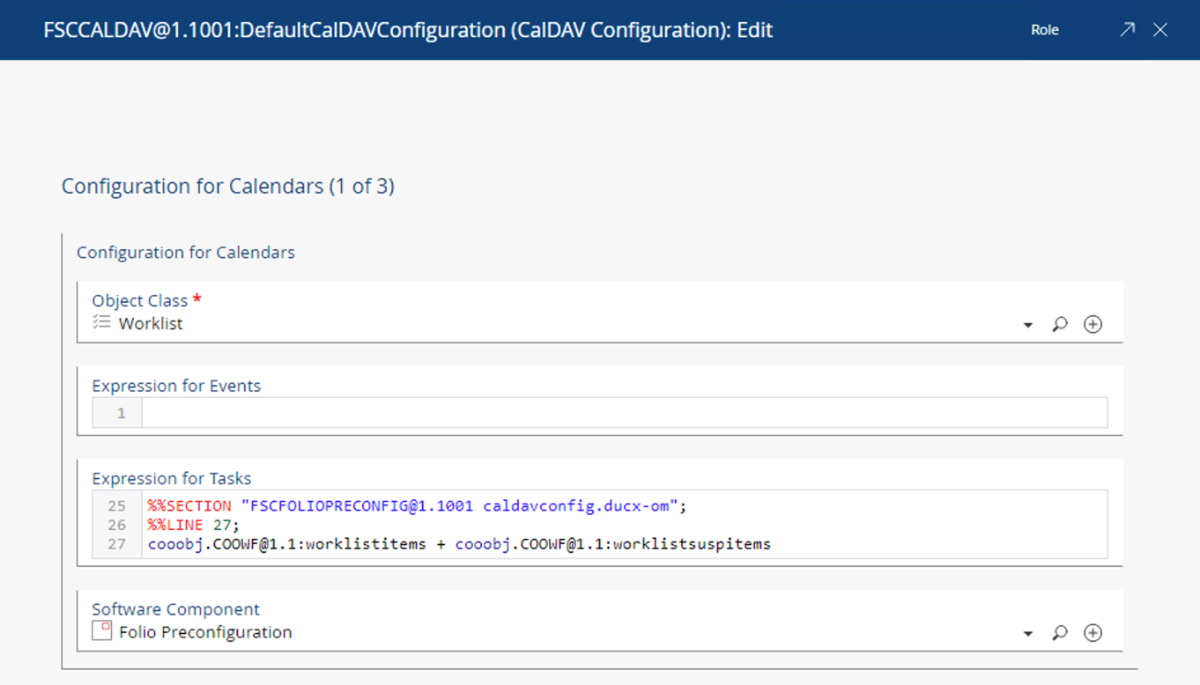
- In the expressions fields it is possible to define two different ways how the list of objects for events and tasks will be created. The expressions must return an object list. In this case you can use the properties Worklist Items (COOWF@1.1:worklistitems) and Suspended/Pending Items (COOWF@1.1:worklistsuspitems). Click “Next”.
- Create a new Configuration for Calendar Entries.
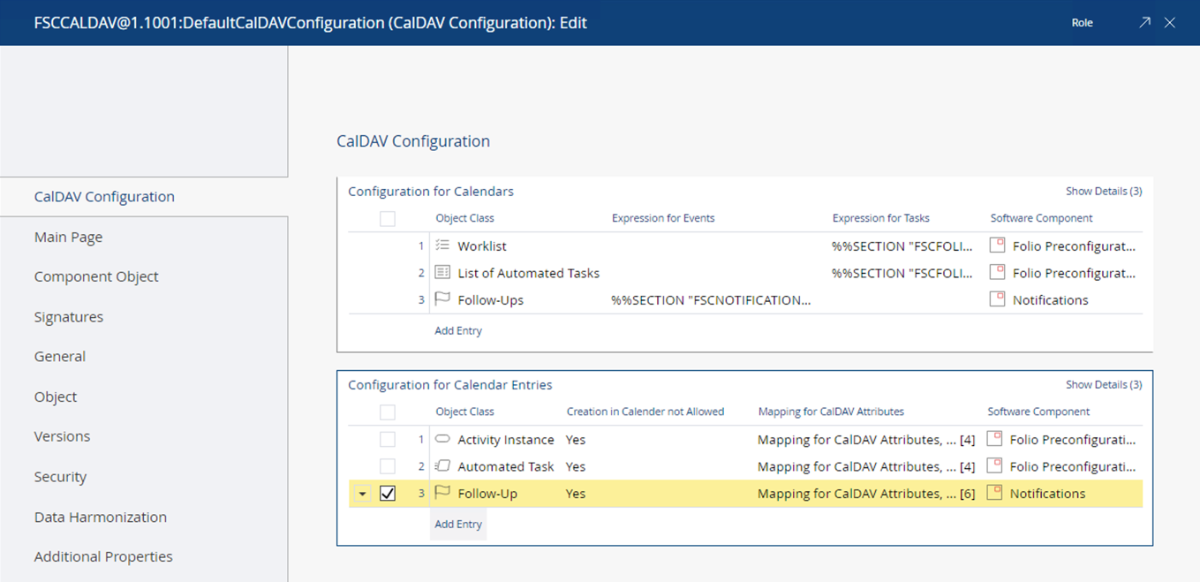
- In Object Class select Activity Instance.
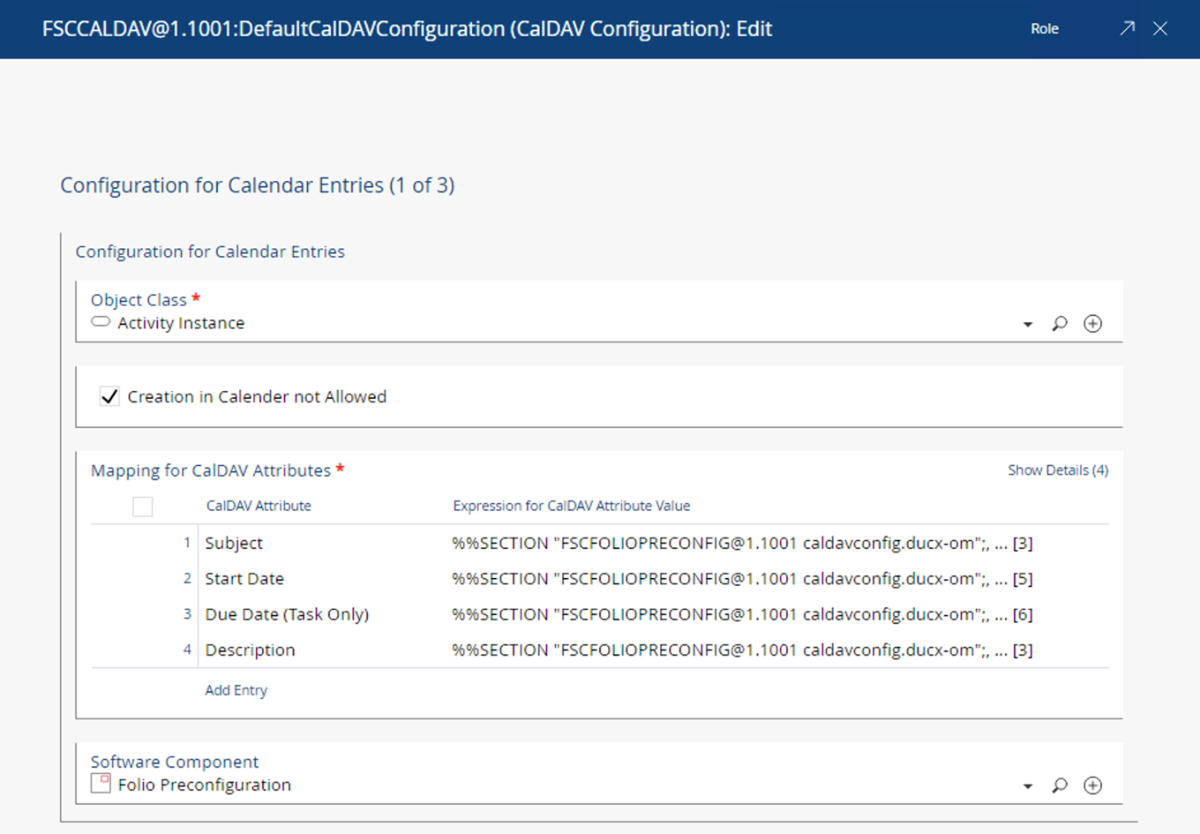
- Create a Mapping of CalDAV attributes to Fabasoft Folio properties
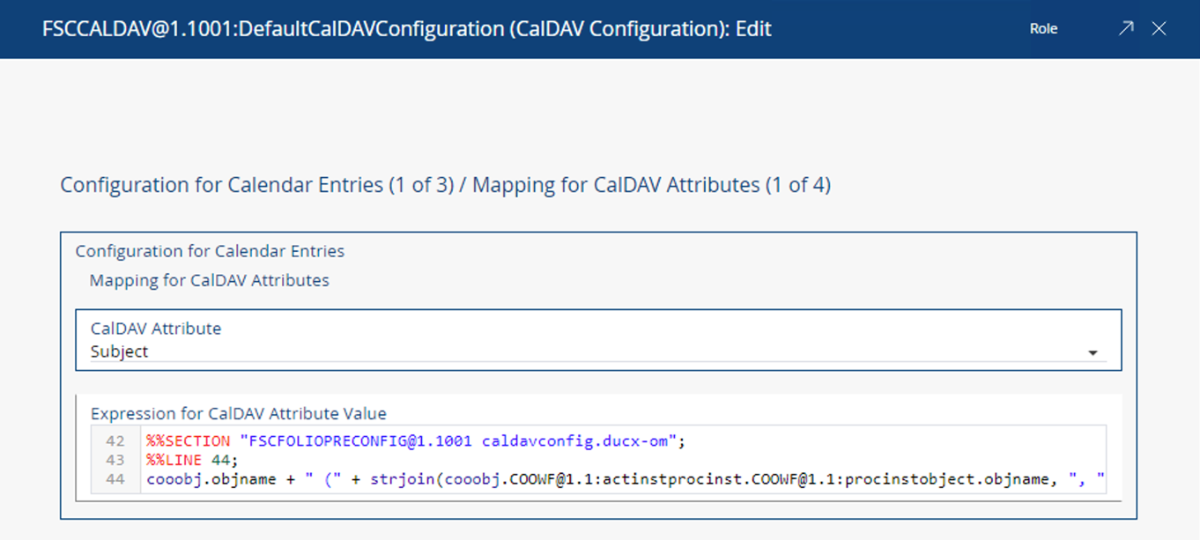
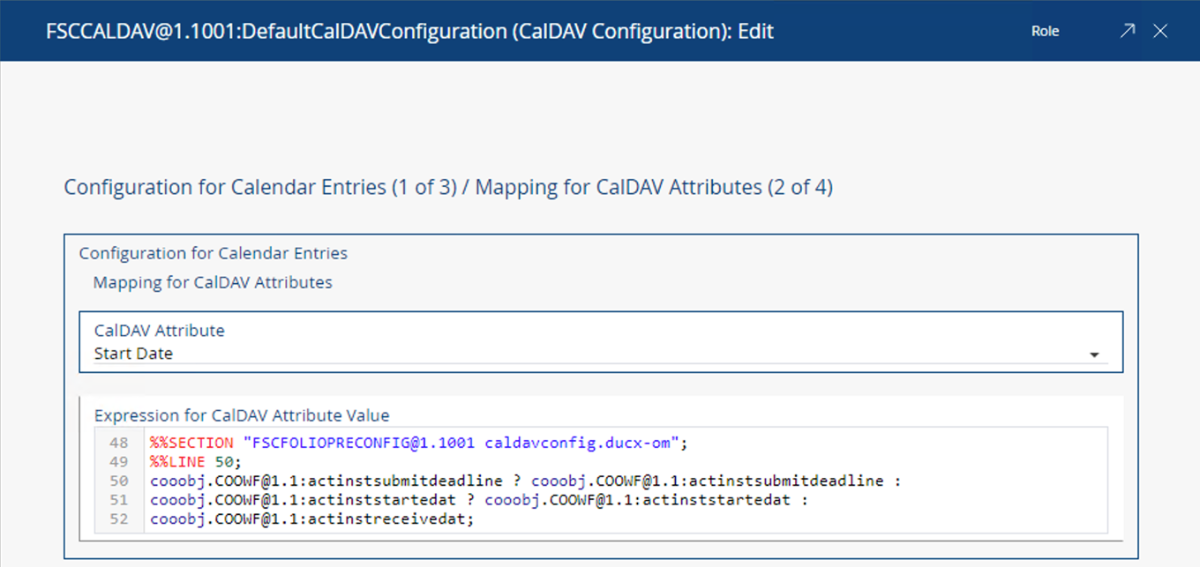

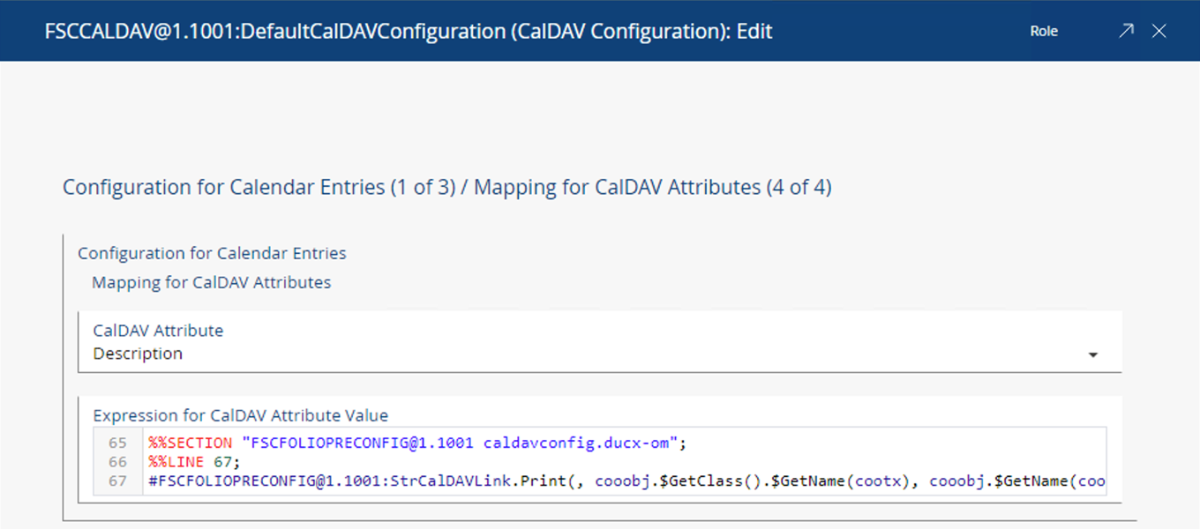
The type of mapped Fabasoft Folio properties must match the type of CalDAV attributes:- Subject: String
- Location: String
- Start Date: Date/Time
- End Date: Date/Time
- Due Date: Date/Time
- Description: Sting or String list
- Recurrence Rule: property must be of the type FSCCALDAV@1.1001:RecurrenceRule
- Attendees: property must be of the type FSCCALDAV@1.1001:Attendee
- All Day: Boolean
- Click “Next” to save the changes.
- After the configuration is done add the configuration to the Current Domain. Open the properties of the Current Domain object in edit mode.
- Click the “Components Configuration” tab.
- In the Configuration for CalDAV field select the recently created configuration object.

- Click “Next” to save the changes.
- Now you can add Worklists to calendar lists and Activity Instances to Calendars.
To access the Worklist in a calendar client use an URL with the following pattern: http://<webserver>/<virtual directory>/caldav/<Object address of your worklist>
Example: https://folio.fabasoft.com/folio/caldav/COO.1.505.3.12345